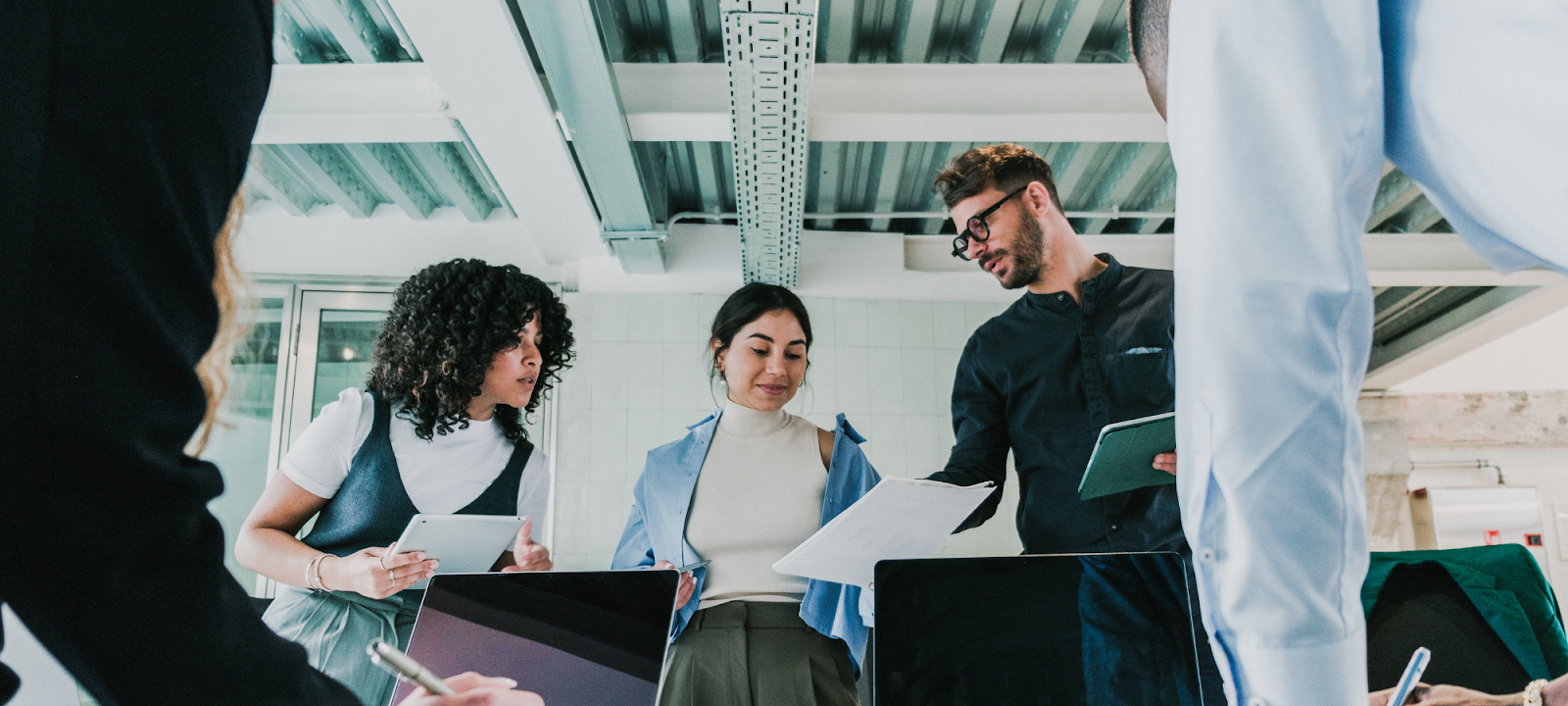The Importance of a Solid Backup Strategy
In today’s digital-first environment, every business—regardless of size or industry—relies on data to function efficiently.
From customer information and financial records to intellectual property and daily operational files, data forms the backbone of modern business operations. Protecting this data is not just a technical necessity; it is a business imperative.
A single data loss event, whether caused by cyberattacks, human error, hardware failure, or natural disasters, can cripple operations, damage reputation, and result in significant financial loss.
This is where a comprehensive backup strategy becomes crucial. A well-designed backup approach ensures that critical data is protected, easily retrievable, and resilient to various risks. The choice between cloud and on-premises solutions often depends on the scale and complexity of the required backup infrastructure.
Among the most common approaches are cloud backup solutions and on-premises backup systems. Each offers unique advantages and challenges, and businesses often struggle to determine which path best aligns with their operational needs, budget, and compliance requirements.
Understanding your organization’s data backup needs is essential for choosing the right approach.
The debate of cloud vs on-premises backup is not new, but it has become increasingly relevant as organizations adopt new technologies and operating models.
With the rapid growth of cloud computing, many companies are migrating workloads and storage to remote servers managed by third-party providers.
At the same time, others continue to rely on on-premises solutions, maintaining physical infrastructure and storing sensitive data in-house for greater control.
This article explores the key differences, benefits, and drawbacks of each option.
By understanding the core principles of both cloud storage solutions and on-premises backup strategies, business leaders can make informed decisions and build a robust data protection strategy that safeguards their most valuable digital assets.

Understanding Cloud Backup Solutions
Cloud backup solutions have become a cornerstone of modern data protection strategies, leveraging the power of cloud computing to deliver scalable, efficient, and cost-effective storage.
Cloud backups play a crucial role by providing businesses with scalable, accessible, and cost-efficient ways to safeguard their data.
These services are built on the cloud computing model, which includes IaaS, PaaS, and SaaS, and defines the level of control, management, and flexibility available to organizations using cloud backup services.
Rather than relying on physical infrastructure maintained onsite, cloud backup transfers backup files to remote servers hosted and managed by third-party providers, such as major cloud providers like Google Cloud.
Key Benefits of Cloud Backup
- Scalability and Flexibility: Cloud storage solutions allow businesses to easily adjust storage capacity to meet changing data volumes, avoiding expensive investments in local storage hardware. The cloud provider is responsible for managing the underlying infrastructure and ensuring data availability.
- Reduced Maintenance: With cloud backup services, businesses shift responsibility for hardware and software upkeep to cloud service providers, reducing the burden on internal IT teams. Cloud providers often offer automated backups, reducing manual intervention and minimizing human error.
- Accessibility and Remote Recovery: Mission critical data stored off-site in remote data centers can be accessed and restored from virtually anywhere, provided there is a stable internet connection. Cloud backups allow users to access data from any device or location.
- Disaster Recovery Capabilities: Storing data off-site ensures resilience during natural disasters or localized outages. Cloud providers invest heavily in redundancy, ensuring business continuity even when unexpected events occur.
Security Measures for Cloud Backup
A common misconception is that moving data to the cloud compromises security. In reality, most cloud service providers deploy advanced security measures, such as encryption, access controls, and continuous monitoring, making data security a top priority.
Many even offer cloud security solutions specifically designed to safeguard sensitive data during transfer and storage.
However, relying on cloud backup introduces dependency on internet connectivity, meaning that network disruptions could impact backup jobs and data restoration processes.
For industries handling sensitive data, compliance considerations must also be evaluated before adopting a fully cloud-based backup approach.

Understanding On-Premises Backup Solutions
On-premises backup solutions rely on an organization’s own physical infrastructure and storage devices to protect and store critical data. An on premise environment provides direct control over hardware, security, and compliance.
An on premises backup solution typically includes servers, networking equipment, storage device, and other essential hardware components.
Data is typically backed up to local servers, tape libraries, or network-attached storage within the company’s own data center, where organizations store data locally within their own facilities. This method gives organizations complete control over their backup strategy and sensitive data in-house.
Key Benefits of On-Premises Backup
- Direct Control and Security: Premises backups offer enhanced control and security, as businesses maintain direct oversight over backup jobs, security settings, and physical access to data. This approach appeals to companies that prioritize handling sensitive data internally.
- No Internet Dependency: Backups and restores can be performed without relying on an internet connection, ensuring rapid access to backup files even if network connectivity is unavailable.
- Customization and Compatibility: On-premises backup can be integrated with legacy systems and existing systems, making it easier to maintain established workflows.
Challenges of On-Premises Backup
Despite its advantages, on-premises backups present several challenges:
- High Upfront and Maintenance Costs: Organizations must invest in storage capacity, physical infrastructure, and ongoing maintenance.
- Vulnerability to Local Disasters: On-premises backups are at risk from fires, floods, and power outages affecting the data center, which can result in data loss if off-site copies are not maintained.
- Scalability Limitations: Unlike cloud storage solutions, scaling up an on-premises backup system often requires significant investment in new hardware and IT resources.
On-premises backups, while offering direct control over data, are limited by these risks and may not provide sufficient protection or flexibility for modern disaster recovery needs.
Organizations relying solely on on-premises backup solutions must weigh these trade-offs carefully and consider adopting hybrid approaches to mitigate risks.

Comparing Cloud vs. On-Premises Backup
When evaluating cloud vs. on-premises backup, businesses must weigh differences in cost efficiency, security measures, scalability, and operational efficiency.
Reliable data backups—whether automated in the cloud or managed on-premises—are essential for ensuring business continuity, minimizing downtime, and reducing manual effort.
Each approach offers unique benefits and limitations depending on your business goals, regulatory environment, and IT capabilities.
Cost Considerations
Cloud backup services typically follow a subscription model, shifting expenses from capital expenditures to operating expenses. This eliminates the need for maintaining physical infrastructure or investing heavily in storage devices.
In contrast, on-premises solutions require upfront investment in hardware, software, and ongoing maintenance, making them less cost-efficient over time.
While cloud providers invest heavily in infrastructure and security, businesses using on-premises methods bear full responsibility for upgrades and upkeep.
Scalability and Flexibility
Cloud solutions offer near-limitless storage capacity and can scale as business needs grow, supporting mission-critical data storage without purchasing additional hardware.
On-premises backup, however, requires purchasing and installing more equipment, which can delay response to growth or seasonal demand. For organizations prioritizing rapid scalability and operational efficiency, cloud computing often has the edge.
Security and Control
Security remains one of the most debated aspects of cloud vs on-premises. Cloud service providers implement advanced cloud security solutions and comply with strict industry standards.
They also operate remote data centers with redundancy for disaster recovery. Private clouds offer dedicated, secure, and customizable infrastructure for organizations that require enhanced control and compliance, while public clouds provide scalable, cost-effective, shared environments managed by third-party providers.
However, some industries prefer on-premises backup because it offers direct control of sensitive data in house, reducing reliance on third-party providers.
For these organizations, maintaining backups on local storage provides reassurance, especially when managing sensitive data governed by strict compliance.
Performance and Connectivity
Cloud backup solutions depend on a stable internet connection. If bandwidth is limited, backup jobs and restores may take longer, potentially impacting business continuity. On-premises solutions, conversely, do not depend on internet connectivity, offering faster access to backup files and immediate recovery in some scenarios.

Benefits of Cloud Backup Solutions
Adopting a cloud backup solution provides businesses with flexibility, scalability, and resilience. These solutions are often managed by a third party provider, reducing the burden on internal IT teams.
By leveraging cloud service providers, organizations can focus on core business operations while reducing the complexities associated with maintaining physical infrastructure.
Scalability and Cost Efficiency
With cloud backup services, businesses gain access to virtually unlimited storage capacity without the burden of purchasing or upgrading storage devices. This significant cost savings model enables businesses to pay for only the storage they need while adapting to changing requirements seamlessly.
Enhanced Disaster Recovery
Cloud backup plays a critical role in disaster recovery. By storing backup files on remote servers managed by major cloud providers, organizations ensure that even in the event of natural disasters or local storage failures, they can quickly restore operations.
This supports business continuity and minimizes downtime.
Advanced Security Measures
Leading cloud service providers invest heavily in cloud security solutions, providing robust data protection through encryption, continuous monitoring, and advanced access controls. This level of protection often exceeds what smaller organizations can implement in on-premises backup solutions.
Reduced IT Burden
Moving to a cloud backup solution shifts maintenance responsibilities to third-party providers, reducing the workload on internal IT teams. This allows businesses to allocate resources to strategic initiatives instead of day-to-day backup maintenance tasks.
Benefits of On-Premises Backup Solutions
While cloud backup solutions are growing in popularity, on-premises backup solutions remain valuable for organizations that prioritize direct control over their data protection strategy and infrastructure.
Complete Control and Customization
With on premises backup, businesses maintain complete control over their storage devices, data center, and overall physical infrastructure. This enables highly customized backup strategies tailored to unique compliance or regulatory needs. Organizations handling sensitive data in house often favor this level of control.
No Dependency on Internet Connectivity
Unlike cloud backup, which relies on a stable internet connection, on premises backup operates independently of bandwidth or connectivity issues. This allows businesses to run backup jobs and perform restores quickly, even in environments with limited internet access.
Speed and Local Data Access
For businesses that require fast recovery of mission critical data, local storage offers rapid access times compared to downloading large backup files from remote data centers. This is particularly advantageous when working with legacy systems or applications requiring minimal downtime.
Security Managed In-House
By storing sensitive data on-site, organizations avoid transferring data over external networks, reducing exposure to certain cyber risks. Internal security teams can directly manage security measures and access policies for safeguard sensitive data.

Comparing Cloud vs On-Premises Backup: Key Considerations
Choosing between cloud backup and on premises backup requires evaluating your data protection strategy in the context of your unique business needs, compliance requirements, and operational priorities.
Cost Efficiency and Investment
- Cloud backup solutions typically operate on a subscription basis, delivering significant cost savings by reducing the need for maintaining physical infrastructure such as own data centers.
- On premises solutions require upfront investments in storage devices, physical infrastructure, and IT staffing but can be cost-effective for organizations with existing legacy systems and long-term backup strategy commitments.
Scalability and Storage Capacity
- Cloud storage solutions offer virtually unlimited storage capacity managed by major cloud providers or third-party providers, enabling fast scaling as data grows.
- On premises backup solutions have finite local storage capacity, often requiring additional hardware or infrastructure upgrades to meet growing demand.
Control and Compliance
- On premises backup provides complete control over sensitive data in house, which is crucial for industries with strict compliance and regulatory requirements.
- Cloud providers invest heavily in robust data protection, cloud security solutions, and compliance certifications, offering peace of mind while meeting regulatory demands.
Internet Dependency and Accessibility
- Cloud backup services depend on stable internet connectivity for backup jobs and data restoration. Businesses in areas with unreliable internet may experience delays.
- On premises backup solutions function independently of internet bandwidth, enabling quicker data backup and recovery for critical data stored locally.
Flexibility with Hybrid Backup Strategies
Many businesses adopt a hybrid backup strategy that combines cloud computing with traditional on premises infrastructure, offering both the operational efficiency of the cloud and the direct control of on-site systems.

Hybrid Backup Strategies for the Modern Enterprise
A hybrid backup strategy combines the best of both worlds: cloud backup solutions and on premises backup solutions. This approach is becoming increasingly popular as businesses look to balance cost efficiency, security measures, and business continuity.
Why Hybrid Backup?
Hybrid backup provides flexibility by allowing businesses to keep sensitive data in house using local storage while leveraging remote data centers and cloud backup services for mission critical data and disaster recovery scenarios. This reduces reliance on a single solution and helps safeguard against natural disasters or localized failures.
Enhancing Business Continuity
Hybrid systems enable rapid recovery through on premises backup while still supporting off site storage for long-term retention and regulatory compliance. This layered approach helps maintain operational efficiency and reduce downtime during disruptions.
Security and Compliance
- On premises backup provides direct control over sensitive data, ensuring compliance for industries with strict data sovereignty rules.
- Cloud service providers deliver robust data protection and advanced cloud security solutions, complementing on-site security measures.
Cost and Storage Flexibility
Hybrid strategies also offer significant cost savings by using cloud storage solutions for less frequently accessed data, reducing the need for continually expanding physical infrastructure. Meanwhile, backup files for core applications can remain on-site for faster access.
Ideal Use Cases
A hybrid cloud strategy is ideal for businesses with:
- Legacy systems requiring localized backup
- Regulatory mandates requiring safeguard sensitive data on premises
- Need for remote servers managed by third-party experts for backup jobs and disaster recovery planning.

Cloud vs On-Premises Backup Security Considerations
When evaluating cloud backup versus on premises backup solutions, security measures are a critical factor in selecting the right data protection strategy. Both approaches offer benefits and risks that businesses must understand before finalizing their backup strategy.
Cloud Backup Security
Cloud service providers invest heavily in advanced cloud security solutions, such as:
- End-to-end encryption of backup files
- Continuous monitoring for data loss or breaches
- Redundant remote servers for disaster recovery
Leading major cloud providers like Google Cloud and others follow strict compliance frameworks, safeguarding sensitive data with advanced access controls and threat detection tools.
On-Premises Backup Security
On premises solutions give businesses complete control over sensitive data in house and allow the use of custom security measures.
By storing backups within the physical infrastructure of an own data center, organizations can control every aspect of access and security.
However, maintaining physical infrastructure requires robust internal security, including:
- Restricted access to storage devices
- Network firewalls
- Regular audits to identify vulnerabilities
Compliance and Regulatory Considerations
Highly regulated industries often prefer on premises backup due to their ability to safeguard sensitive data locally, meeting strict compliance requirements. Conversely, businesses with distributed teams or complex compliance needs often rely on cloud storage solutions with built-in governance features.
Balancing Security and Accessibility
The right choice depends on your business continuity needs and risk tolerance. Cloud solutions excel in disaster recovery and remote servers managed by experts, while on premises models provide direct control but require more internal resources.
Cost Efficiency and Operational Impact
One of the most significant factors in choosing between cloud backup and on premises backup solutions is cost efficiency. Both models impact financial planning, operational management, and long-term business strategy in different ways.
Cloud Backup Cost Advantages
Cloud service providers offer cloud backup services based on usage, allowing businesses to scale storage capacity without investing in additional physical infrastructure. Benefits include:
- Significant cost savings from eliminating upfront hardware expenses.
- Reduced need to hire specialized staff for maintaining physical infrastructure.
- Flexible, pay-as-you-go pricing for cloud storage solutions.
These savings often appeal to companies pursuing rapid growth or digital transformation initiatives.
On-Premises Backup Cost Considerations
On premises solutions typically involve higher upfront costs, including purchasing storage devices, maintaining an own data center, and covering ongoing power, cooling, and staffing costs.
However, organizations with stable environments or existing traditional on premises infrastructure may see value in extending the use of existing systems to achieve cost efficiency over time.
Operational Efficiency Impacts
Cloud solutions often improve operational efficiency by automating backup jobs, allowing IT teams to focus on higher-value initiatives rather than managing backups manually. Conversely, on premises backup requires dedicated staff for monitoring, hardware replacement, and long-term lifecycle management.
Hybrid Approaches
A hybrid backup strategy can balance these elements, combining local storage for quick restores with remote data centers for disaster recovery and compliance needs. This approach helps businesses leverage significant cost savings while still retaining control over mission-critical data.

Choosing the Right Strategy for Your Business
Determining whether to adopt cloud backup, on premises backup solutions, or a hybrid backup strategy depends on your unique business requirements, regulatory environment, and long-term goals.
Assess Your Existing Systems
Before making changes, review your existing systems, including legacy systems and traditional on premises infrastructure. Understanding the current data center footprint and available storage capacity helps define realistic backup options.
Evaluate Data Sensitivity and Compliance
Businesses storing sensitive data in house or subject to strict compliance regulations may favor on premises solutions for complete control. However, cloud providers invest heavily in cloud security solutions and offer advanced tools to safeguard sensitive data across remote servers managed by third party providers.
Consider Connectivity and Recovery Needs
Reliable internet connectivity is essential for cloud backup solution performance, especially when transferring large backup files to remote data centers. If frequent or rapid recovery of mission critical data is necessary, maintaining local storage with on premises backup may still be preferred.
Think About Cost Efficiency and Scalability
If significant cost savings, flexible growth, and operational efficiency are top priorities, cloud storage solutions offer a strong case. However, organizations that already have substantial investment in physical infrastructure may optimize costs by improving premises backup.
Hybrid Cloud Strategy
For many businesses, the answer is not strictly cloud vs on premises. A hybrid cloud strategy provides a robust data protection model that uses on premises backup for quick local restores while leveraging public cloud or private cloud for offsite protection and disaster recovery.
Making a Strategic Choice
The right data protection strategy must align with business continuity goals and corporate priorities. Engage cloud migration experts or backup specialists to design a strategy that balances cost efficiency, compliance, and long-term scalability.

Building a Backup Strategy That Works
When it comes to cloud vs on premises backup, there is no universal answer—only what is best for your business.
Cloud backup solutions deliver scalability, significant cost savings, and seamless integration with modern cloud computing environments, while on premises backup solutions provide complete control and rapid access to sensitive data in house.
Many organizations choose a hybrid backup strategy that combines the strengths of both approaches, ensuring robust protection against data loss, natural disasters, and cyber incidents.
The right data protection strategy should be built on a thorough understanding of your existing systems, recovery goals, and compliance needs.
Whether your focus is on operational efficiency, business continuity, or future scalability, selecting the right balance between cloud services and on premises solutions is crucial to safeguarding your mission critical data and supporting long-term growth.
Take the Next Step with IMS Cloud Services
A strong backup strategy doesn’t happen by accident—it requires planning, expertise, and the right tools. IMS Cloud Services can help you design and implement a backup and recovery approach that aligns with your unique business goals and budget.
Don’t wait until a data loss incident exposes vulnerabilities.


